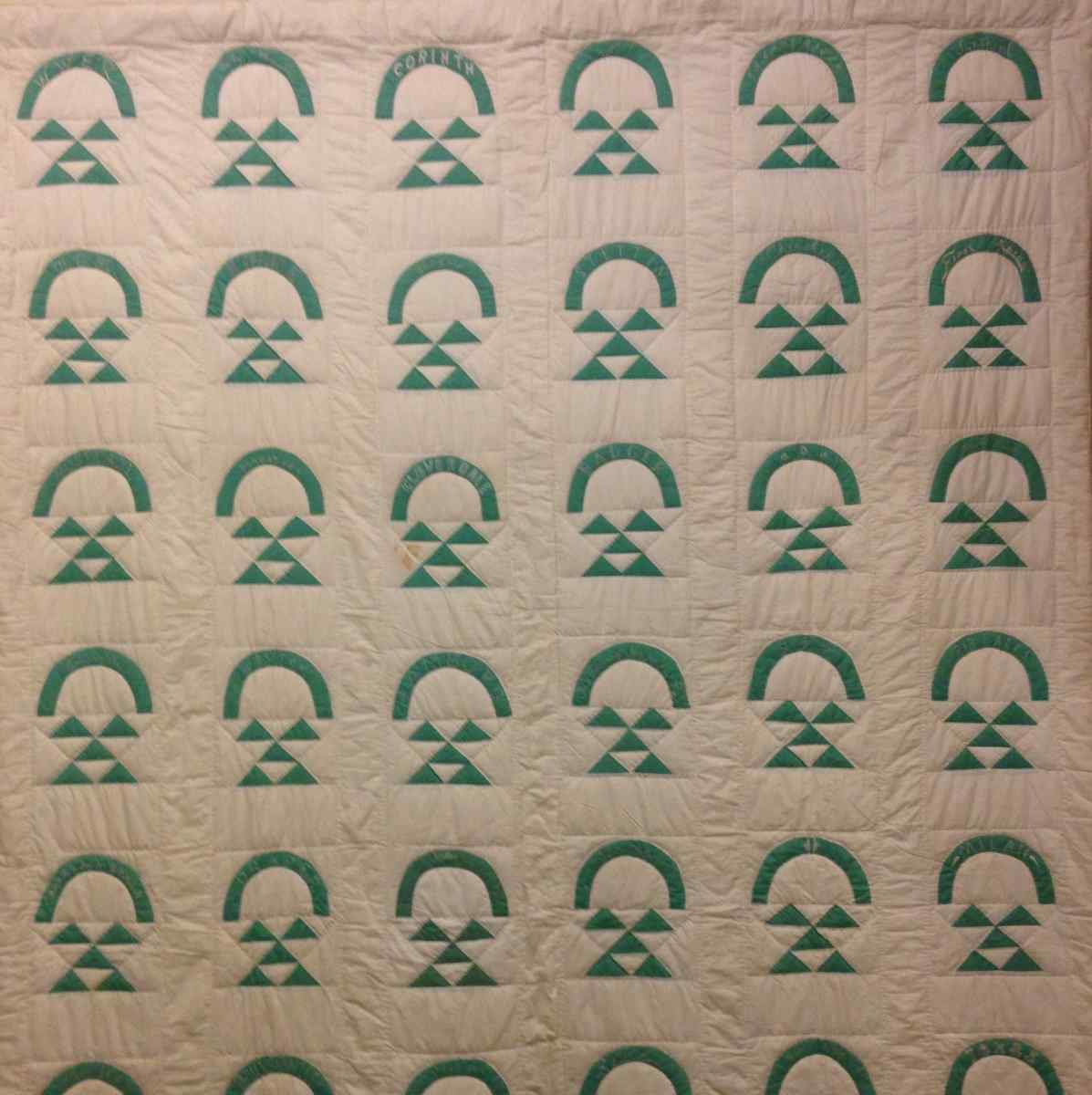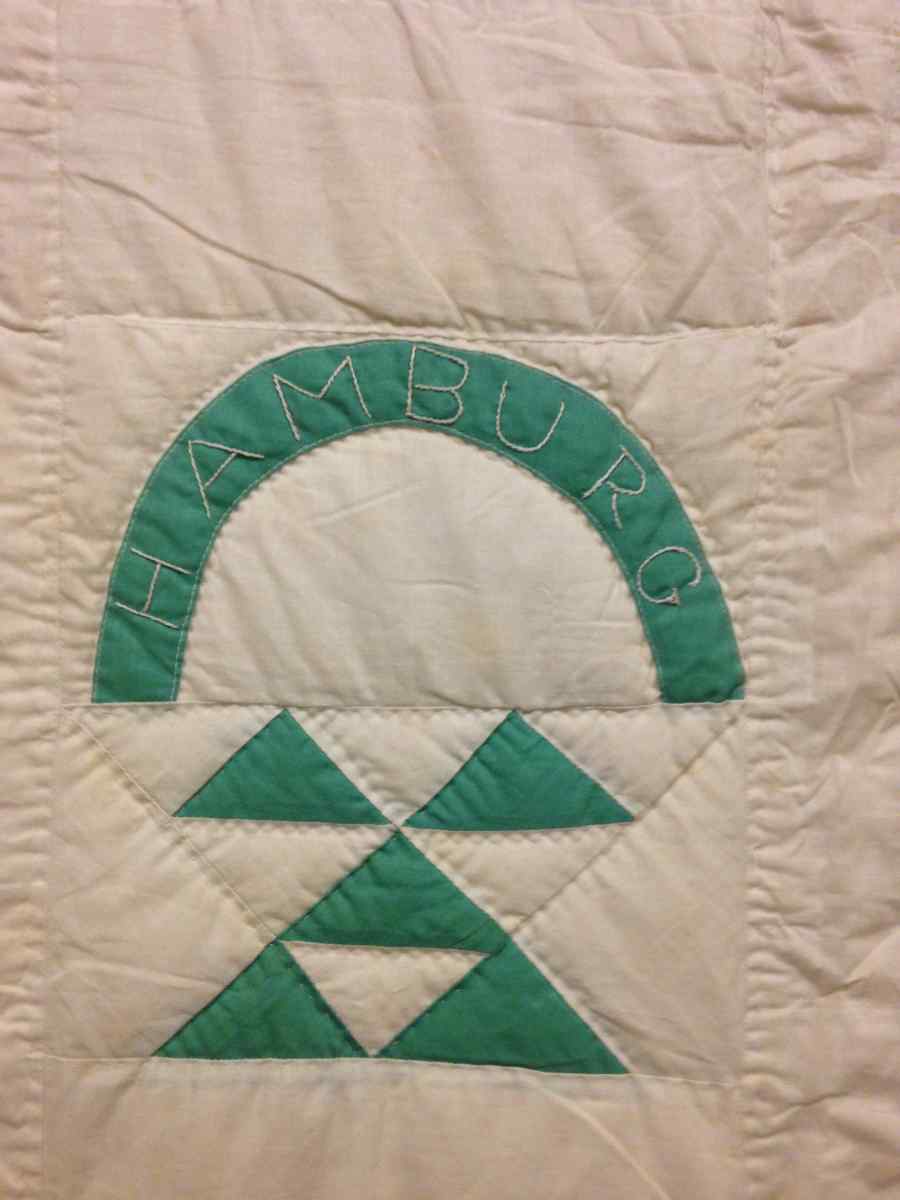Baskets

Presentation Quilt - 1929
Growing up on a farm at the turn of the 20th century gave Vangel Russell insight into the challenging life of rural women. Her work with Marathon County women’s clubs during the 1920s not only provided rural women with important information to better their homes and families, it also gave them social opportunities within their communities.
Mary Vangel Russell was born in Creston, Iowa, in 1896 to farmers Mary Ellen and George Russell. She taught in rural schools before attending the University of Wisconsin in Madison, graduating from the Home Economics department in 1921. She found immediate employment as a Marathon County Extension Agent, based in Wausau. In addition to community, 4-H and girls’ clubs, Vangel spent much of her time organizing rural women’s clubs and working as a home demonstration agent.
Having succeeded the first county agent, the very popular Mary Brady who had served for three years, Vangel had large shoes to fill but was up to the task. Numerous homemakers’ clubs had already formed throughout rural Marathon County, but many opportunities for new clubs existed and Vangel worked diligently to increase participation. Many townships had several clubs, each comprised of 10 to 25 neighbors who met monthly in members’ homes.
Vangel assisted these clubs by providing instruction in homemaking skills such as cooking, sewing and millinery (hat making), home management, household finances and home nursing. She also assisted with civic projects in communities, including one led by local women’s groups that brought hot lunch to rural schools.
A typical month during her first year on the job saw Vangel traveling over 1,200 miles, giving 28 lectures and talks, presenting demonstrations to over 1,400 women, making 52 home visits and writing 41 news and magazine articles, all while penning hundreds of letters and making dozens of telephone calls.
In 1927, after nearly five years as the county home dDemonstration agent, Vangel left for a position as an assistant boys and girls club leader in Montana. During her tenure in Marathon County, she organized 18 homemakers’ clubs, bringing much needed information to many rural women.
In an editorial published in the Marathon County Farm Journal, it was noted that “Miss Russell’s departure will be keenly regretted by thousands of Marathon County women who have become attached to her gracious ways and helpful cooperation in their many community clubs.”
The Quilt
In 1929, this quilt was presented to Vangel by the Marathon County homemaker clubs on the occasion of her marriage to John James. The couple, who lived in Madison, had two children. Vangel died in 1990 at the age of 93.
This quilt consists of 36 blocks, each containing a green and white pieced basket with an appliqued green handle. Each basket handle is embroidered in white with the name of a Homemakers Club from Marathon County. Both the piecing and applique work were done with machine stitching. The blocks are separated by strips of white sashing.
The quilt maker used a wool batting and quilted the piece by hand. One large piece of white cotton fabric was used as the backing, possibly made from a bed sheet.


A Typical Month for Vangel Russell, Marathon County Extension Agent
Vangel Russell’s five-year tenure as Marathon County Extension Agent was busy, as evidenced by this summary of her accomplishments and a typical month of her work.
Additional homemakers’ clubs were formed, girls’ 4-H clubs grew in number, a county federation was created, and the county seat short course for women became a regular feature of the agent’s yearly work. During what was claimed to be a typical month, the energetic agent delivered 28 lectures; gave 22 demonstrations; made 52 home visits; established 15 projects with local leaders for each; and distributed 1,031 bulletins. Traveling 1,283 miles, she came in direct contact with over 1,700 county residents. In her spare time she received 94 office calls and 90 phone calls, held 94 conferences and wrote 186 personal letters in response to inquiries. Moreover, her Wausau office sent out 528 circular letters and 41 articles for newspapers and magazines.
Excerpt from Woodlot & Ballot Box: Marathon County in the 20th Century, by Howard Klueter and James Lorence, 1977

